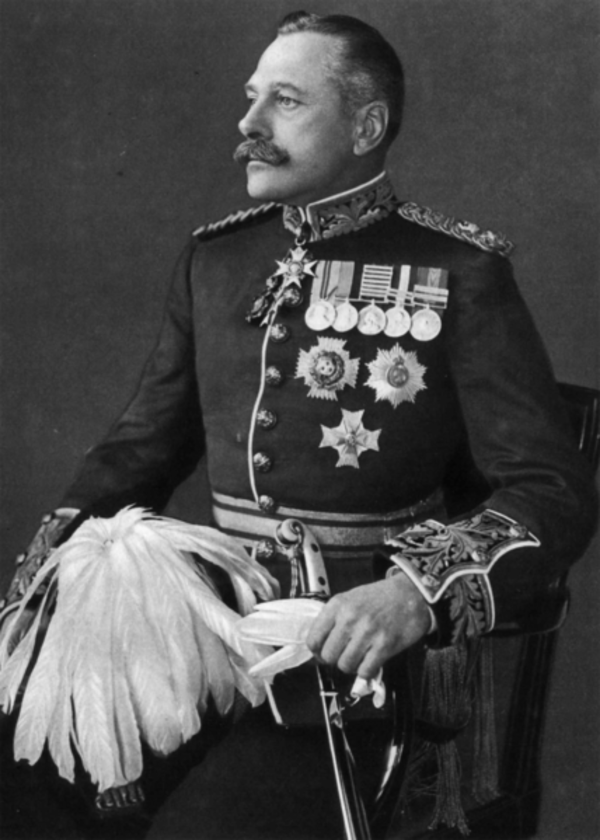The Battle of Loos
The Battle of Loos took place in September 1915 and was part of Joffre’s campaign in Artios designed to push back the Germans.
For the Allies, 1915 had proved to be a difficult and not particularly successful year. There had been no decisive advance on the Western Front and trench warfare continued to dominate.
The Allies were still struggling to recover from the disaster at Gallipoli and the Germans continued to affect morale by causing major damage to the Russian Army on the Eastern Front.
Joffre decided it was time for the British and French armies to launch an attack on the Germans in Artois, which would boost morale and help the Allies with their goal of reliving a strong blow to the Germans.
One prong of the plan would be carried out by the French Army and would involve an attack on the Germans in Champagne. Meanwhile, a joint attack in Artios would see the British attack north of Lens at Loos while the French 10th Army attacked south of Lens.

When Douglas Haig first toured the land north of Lens he found it was flat and was concerned that it would result in heavy losses due to the potential ease of machine gun use for the Germans in such a landscape. He communicated this fears to Joffre but the French Marshal stated that he would not be changing his plans. Kitchener was concerned by Joffre’s attitude, but told Haig that co-operation was essential.
Haig, now with a lot of pressure on him, came up with a plan for the attack at Loos, deciding that an attack in a very narrow frontage would allow the British to concentrate their fire against German machine guns. Essentially, he felt that concentrated artillery and infantry fire would give the British the cover they needed.
However, as the attack approached Haig became aware of a new weapon - poison gas. He realised that the use of such a weapon could neautralise the German machine gunners and so he decided to widen his attack front in the hope that the gas would be as devastating as he believed it could be.
Unfortunately, there was one major problem with his plan - he had to co-ordinate with the French. Haig was told he could only attack on 25th September so he was forced to build some flexibility into his plan. In fact, he came up with two completely separate plans. If the weather was in favour, he would order a wide attack using gas. However, if the wind were blowing in the wrong direction he would narrow the front and attack using poison at a later date.
Haig was confident of success and the British went ahead with their attack on 25th September, with the French carrying out their plan five hours later.
The attack began with an artillery attack on German lines on 21st September - which saw 250,000 shells fired - and as this drew to a close Haig was informed that the weather on 25th September would be favourable.
Haig ordered a poison gas attack but was advised to release it as soon as possible as the weather was changeable. At 05:15, the release of chlorine was ordered. However, the front line reports stated that the wind was too calm for the gas to be released. Despite this, Haig told them to go ahead, and at 05:50 the gas was released by pressurised cylinders.
The release occurred on and off for a 40 minute period before the infantry attack started at 06:30.
In some areas the attack proved successful, with the 15th Division getting into Loos and taking the town relatively quickly. However, lack of communication caused issues elsewhere. At the La Bassée Canal, for example, the officer in charge of releasing the gas failed to do so in time, waiting until a later order and ultimately poisoning 2,632 of his own men.
The British also failed to follow up their successes. In order to succeed, they needed to send in reserve divisions - commanded by Sir John French - which comprised of raw recruits who had only arrived in September. The two divisions - the 21st and 24th - were also held too far away from Loss to have any impact, and were forced to march 50 miles in four days. Haig had assumed they would begin their march as soon as the infantry attack began, but this had not happened.
The reserves arrived too late to have any impact on the battle and they were also extremely tired once they did arrive. Sir John French was blamed for this failure.
The inexperience also meant that the reserves were unable to cope with the Germans and the British only managed to avoid a retreat thanks to the arrival of the Guards Division. Between 26th and 28th September, Britain lost many men to machine guns as they continued to attack the German positions around Loos.
The battle ended on 28th September with the Germans suffering 25,000 losses and Britain suffering 50,000.
MLA Citation/Reference
"The Battle of Loos". HistoryLearning.com. 2026. Web.
